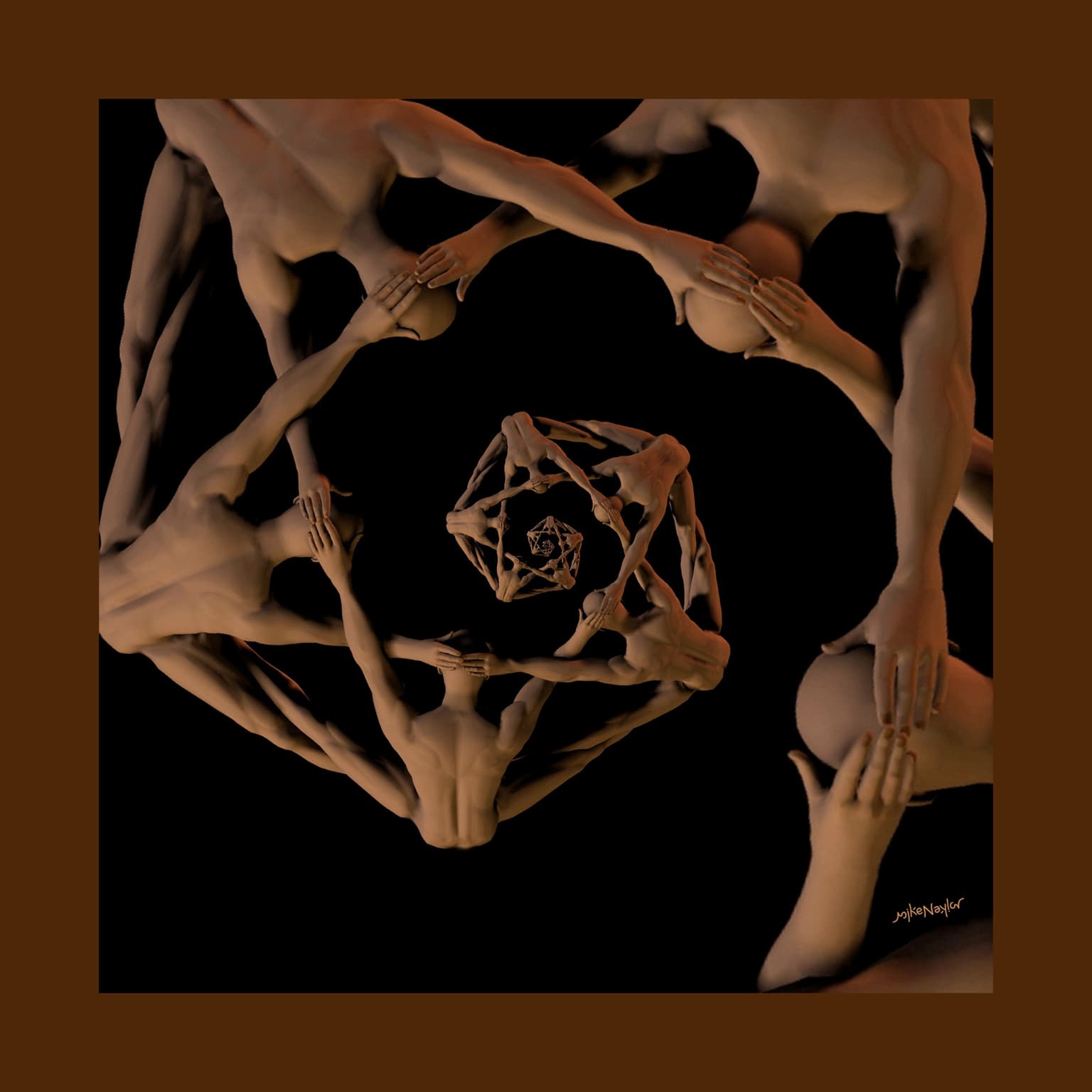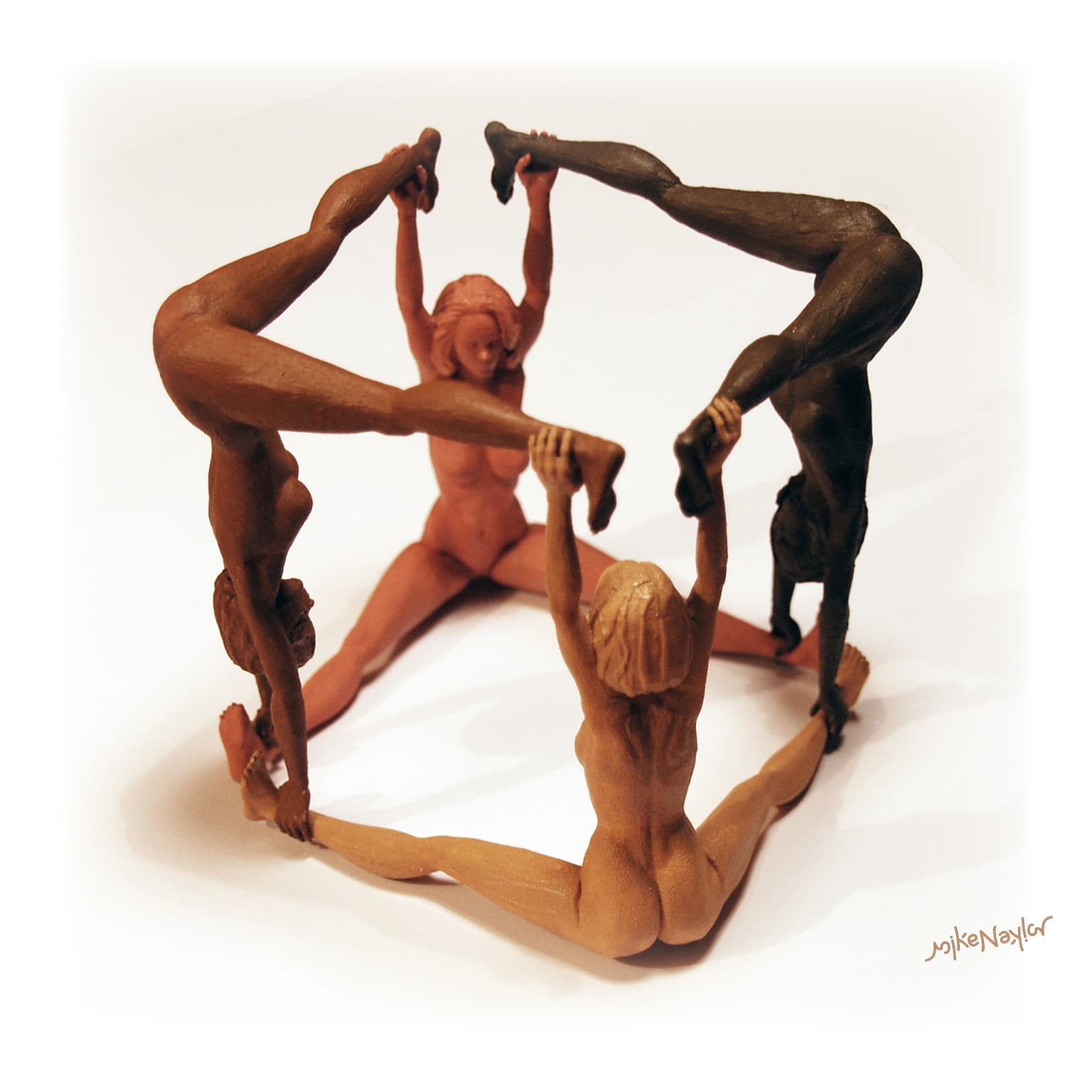Mike Naylor
Artists
Mike Naylor
Artist, COO DragonFjord Puzzles
DragonFjord Puzzles & Games
Vanvikan, Norway
Statement
I enjoy creating mathematical artwork with multiple interpretations and hidden ideas that can be revealed by thoughtful inspection. Much of my artwork focuses on the use of the human body to represent geometric concepts, but I also enjoy creating abstract works that capture mathematical ideas in ways that are pleasing, surprising and invite further reflection.
Artworks

Binar
32 cm x 32 cm
Digital print on acrylic
2011
This image contains 4 fractal elements each of which contains a representation of the binary numbers from 0 to 127 (0 to 1111111). Each quarter of each of the 4 main images was created by starting with a 50% gray square on a white or black background. Two half-size squares are placed adjacent to this square and one half-size square within. The squares are given a shade of gray which averages the two shades around them. This rule is carried out 7 times.
The resulting abacaba fractal contains 128 binary numbers in the sequence from 0 to 127. You are encouraged and challenged to find these binary numbers within the artwork; it is an interesting challenge with many solutions!

Pentaman Spiral
32 cm x 32 cm
Framed digital print
2011
This spiral of human figures link their arms and legs together to form an infinite spiral based on design elements of a inscribed pentagram. An inscribed pentagram is 5-pointed star inside of a pentagon and is one of the sacred symbols of the ancient Pythagoreans. Whereas in the traditional form the edges of the pentagon are equal length, in this representation each successive edge is scaled in proportion to the golden mean, thus creating a spiral instead of a closed figure. The arm and leg linkages create both of the forms of the golden triangles with angles of 36°, 72° and 108°.
This work was inspired by a previous work, Pentamen, shown at Bridges 2011.

The Human Cube
10 cm x 10 cm x 10 cm
Painted SLS nylon sculpture
2012
In this sculpture four human figures join together to create a cube. This work also joins together mathematics and the human experience, reminding us that we are as much a part of mathematics as mathematics is a part of us.
The four figures are separate and identical except for coloration. They snap together to make a free-standing form. Each figure is hand-painted with acrylic.